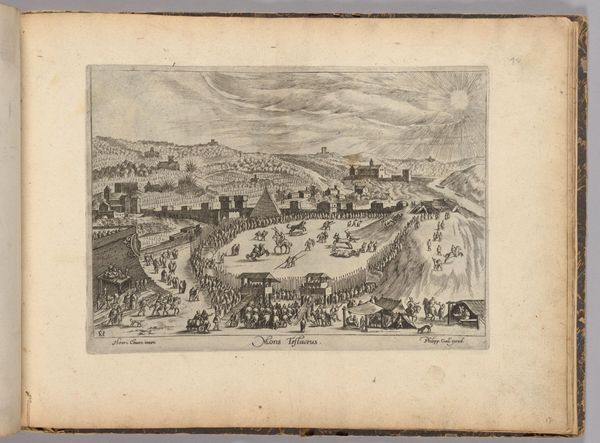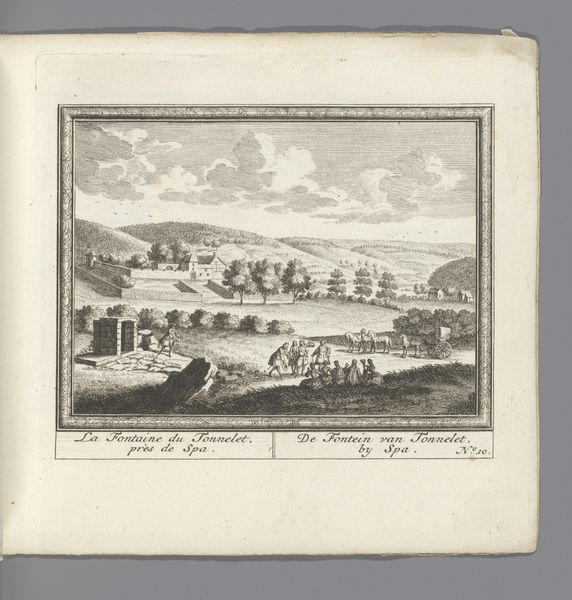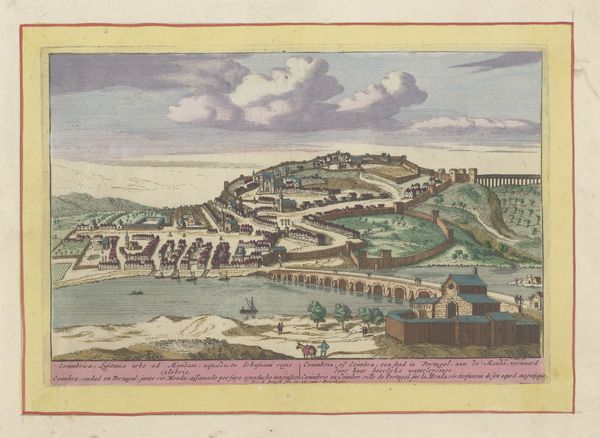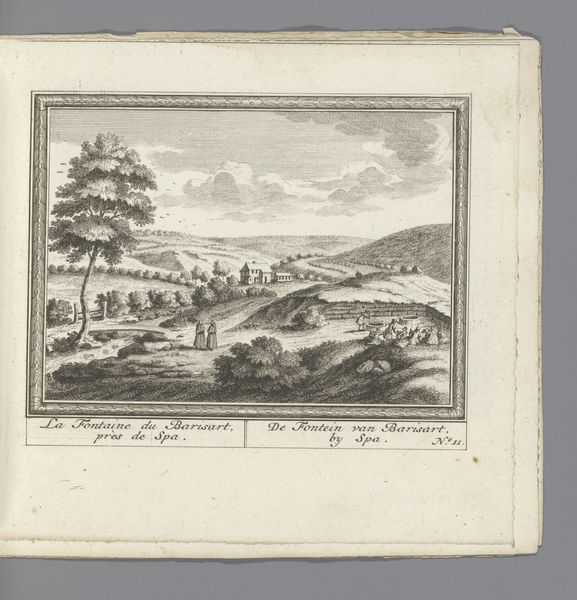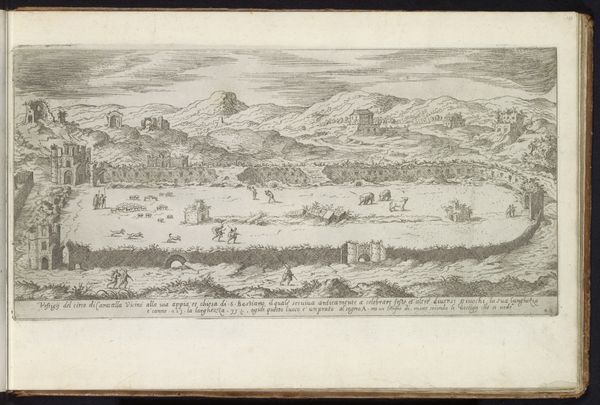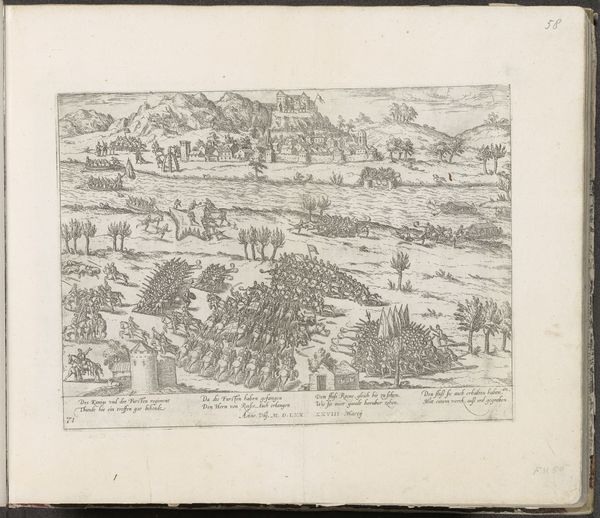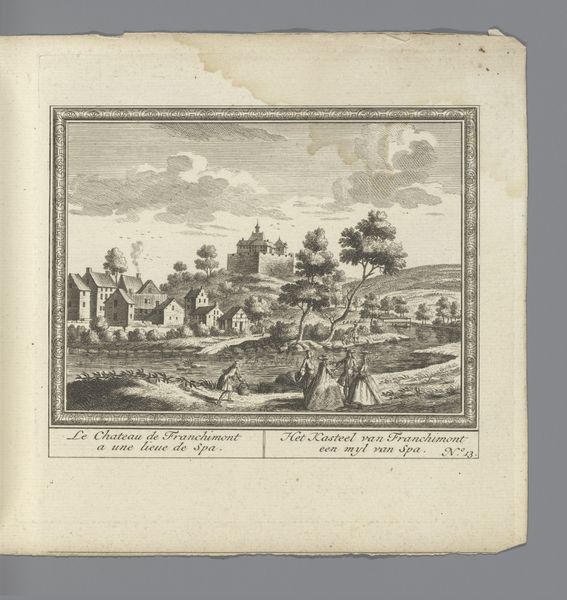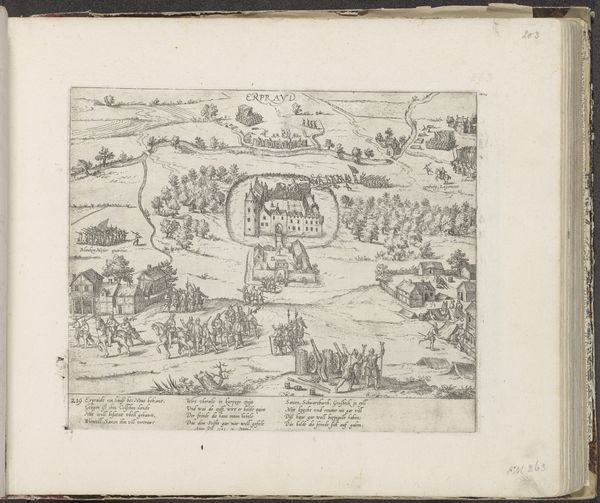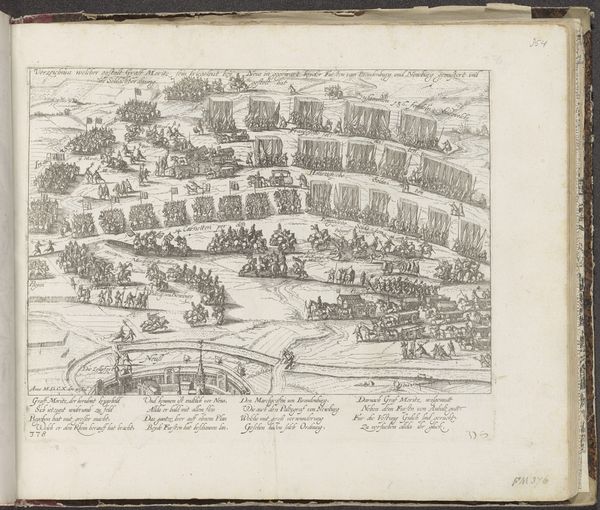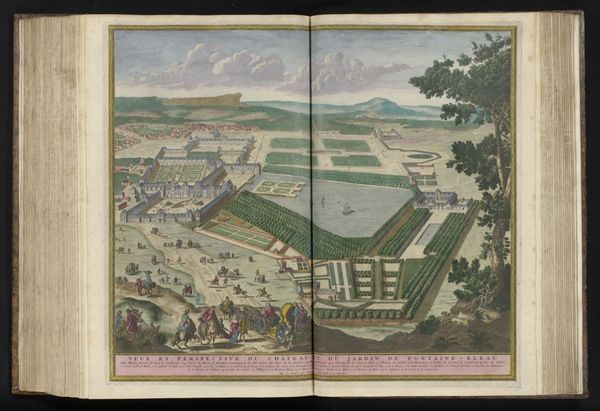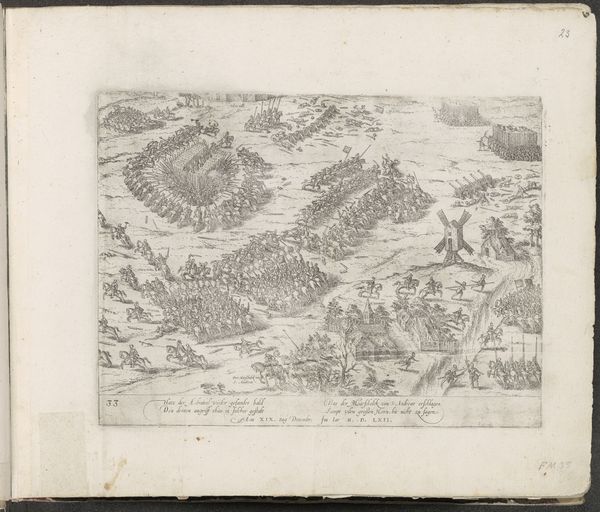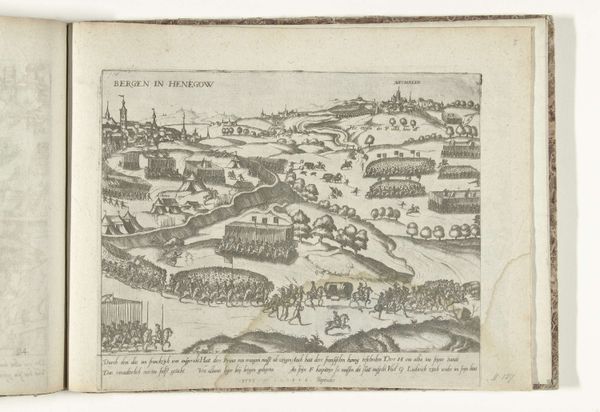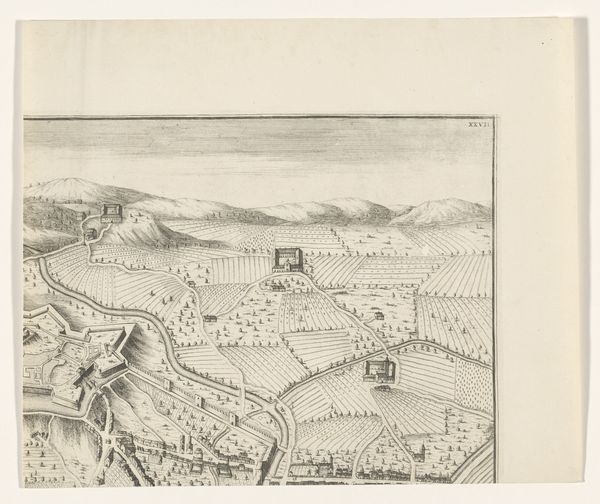
View of the Dutch East India Company’s cattle-post Groenkloof c. 1778 - 1779
0:00
0:00
Dimensions: height 334 mm, width 490 mm, height 265 mm, width 435 mm
Copyright: Rijks Museum: Open Domain
Robert Jacob Gordon made this watercolor of the Dutch East India Company’s cattle-post Groenkloof. The relatively straightforward processes and materials belie the immense social and economic forces at play. The artist has employed the media of paper, ink, and watercolor to depict this outpost, and while it is not particularly impressive from a technical standpoint, it provides significant insights into the enterprise of colonialism. In the image, we see how the Dutch East India Company established these cattle posts to supply their ships with meat, a vital resource for long voyages. The company operated as a vast, vertically integrated structure, involved in all aspects of production, distribution, and consumption, as can be noted from the wagons depicted to the right. Indigenous labor was exploited to maintain these posts, with profound implications for the local population. Remember, even a simple watercolor can reveal complex systems of labor, politics, and consumption, challenging the traditional art historical focus on aesthetics alone.
Comments
No comments
Be the first to comment and join the conversation on the ultimate creative platform.
